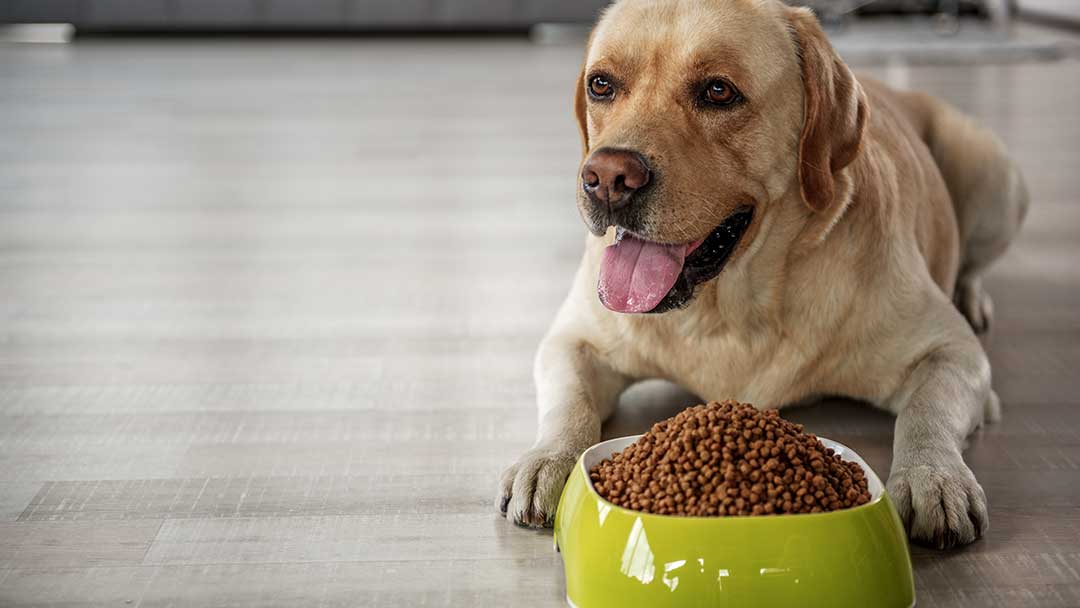
What Should I Look for in Dog Food
A lot of dog owners might find their pet is happy to eat just about anything, but dogs have important nutritional needs. Your dog should enjoy a good quality diet that is balanced. This means they should enjoy a variety of foods with less fillers and processing.
According to the Pet Food Industry Association of Australia (PFIAA), the food you feed your dog must provide four essentials:
- Energy
- Proteins
- Fats
- Vitamins and minerals
Check the packaging on dog food to ensure it offers the appropriate balance of these four essential components. Owners should also consider the life stage and needs of their dog. For example if they are a puppy or suffer from diabetes, they will require a different diet. Different dog breeds also have different nutritional requirements. Your vet will be able to help you choose a food appropriate for your dog.
Protein
Protein is the most important aspect of a dog’s diet as the building blocks of muscle and body tissue. An ideal dog diet consists of 18 to 25 per cent protein. Particularly active dogs and puppies should get slightly more.
Look out for the source of protein in your dog food. Typically, dog food protein comes from meat (organs and muscles, animal by-products and grains (soy or corn). Many dog foods have protein from all of these sources. Dogs can have varying preferences depending on age, breed and lifestyle when it comes to protein sources. Consult your vet or try out several different dog foods to determine what works best for your dog.
Carbohydrates
Carbohydrates are a key part of any dog’s health. Like humans, they are an essential source of energy and primarily come from grains. Cheaper dog foods tend to use wheat and corn while more expensive ones use rice, barley and oats. Dogs with a healthy weight generally maintain a diet of 30 to 70 per cent carbohydrates.
Some dog foods use carbohydrates as a filler, often using leafy green vegetables. These vegetables contain high levels of fibre, which help the dog feel full (less likely to overeat). It also aids with digestion. Good dog foods should contain carbs from a variety of different sources.
It’s sometimes recommended that your dog goes on a grain-free diet to help common digestive problems like gas or bloating. There are plenty of high-quality grain-free dog foods available on the market.
Fat
Fats are highly concentrated forms of energy, giving your dog twice as much energy as protein and carbs. Fat isn’t bad for dogs and are crucial for maintaining a healthy skin and coat. They also boost brain, nerve, and cell and muscle development.
Aim to have 10 to 15 per cent of your dog’s diet consisting of essential fats. A slightly higher amount of fat is appropriate for particularly active dogs. Balance is crucial, as having a significantly higher amount of fat can lead to obesity.
A Combination of Foods
If you blend the above ingredients with the right vitamins, minerals and water, your dog should be healthy and happy. Ideally, you should feed your dog a high quality certified dry food as a base. This will contain a good nutritional balance and all the micronutrients they need. Add some raw meat, fresh bones or other quality treats for their dental health.
If your dog has a nice shiny coat, healthy teeth and nice solid logs of faeces, they are probably enjoying a quality diet. Beware of human foods which may be toxic for dogs. Remember that variety is key and to closely observe your dog.